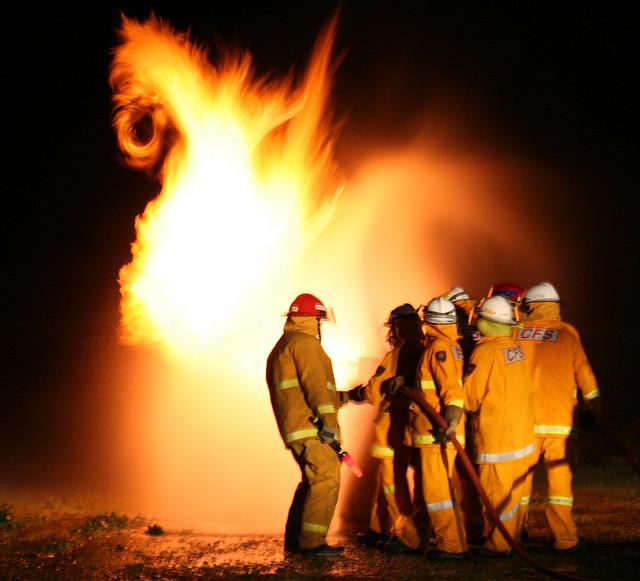 As the summer months draw close, recent reports indicate that we’re in store for an ‘above normal’ fire season that’s more active than 2013–14’s. Those forecasts are a solemn reminder that natural disasters in Australia can’t be prevented—and that their consequences shouldn’t be ignored.
As the summer months draw close, recent reports indicate that we’re in store for an ‘above normal’ fire season that’s more active than 2013–14’s. Those forecasts are a solemn reminder that natural disasters in Australia can’t be prevented—and that their consequences shouldn’t be ignored.
Natural disasters cause widespread disruption, and are currently estimated to cost the Australian economy $6.3 billion per year. Those costs are projected to rise (PDF) incrementally to $23 billion by 2050. Improving Australia’s resilience will allow us to better prepare for disasters and assist in reducing losses, rather than just waiting for the next king-hit and paying for it afterwards.
With that in mind, today ASPI launched its latest Special Report—Working as one: a road map to disaster resilience for Australia (PDF). Building on the 2011 National Strategy for Disaster Resilience (PDF), this report offers a roadmap for enhancing Australia’s disaster resilience.
There’re a number of actions that individuals, businesses, communities and governments at all levels should take. In terms of strengthening federal–state links, significant emergency management organisational changes in Queensland and Victoria create an opportunity to rethink how governments coordinate disaster management. Specifically, there’s an opportunity to reappraise how the Australia–New Zealand Emergency Management Committee (ANZEMC) (PDF) engages with state government agencies. Reconfirming alignment between the work of ANZEMC’s four subcommittees and state‑based groups would ensure that efforts are effective and not unnecessarily duplicated across jurisdictions.
Along the same lines, Emergency Management Australia (EMA) should facilitate discussions among the states to identify national standards for emergency management. That would provide a means to achieve efficiencies of scale, improve cost-effectiveness and contribute to a national dataset of performance and operational standards. Such a dataset would assist in coordinating resource planning and inter-jurisdictional operations.
EMA’s mandate should also be tweaked. EMA needs a mandate from cabinet to lead the government’s response to significant crises. That would give it the power to ensure that all national agencies are properly coordinating their emergency management planning. EMA could also be given a mandate to coordinate state resources when the requirement for disaster response exceeds any single jurisdiction’s capacity.
And we should prepare for the big one. Emergency management agencies need to plan for catastrophic disruptions to critical infrastructure. Problems of medical surge should be addressed, including the establishment of national hospital standards for dealing with mass-casualty disasters. Additionally, we should develop a reliable nation-wide emergency communications system as well as a national approach to utilising unmanned aerial vehicles (UAVs) in disaster management.
In terms of investment, mitigation needs to carry the day. Prioritising mitigation investment should be policy for all Australian governments and a key part of Canberra’s microeconomic reform program. It’s more efficient than spending over and over again on relief, and it works.
With the massive sell-off of state assets underway, we need public–private management arrangements for critical infrastructure to ensure service-provision continuity. Direct engagement with private‑sector infrastructure operators is needed to more effectively incorporate industry into emergency management planning. Business liaison positions should be established in emergency management agencies, including EMA.
We also need to invest in the next generation. First-aid training should be introduced into the national primary school curriculum because these lifesaving skills (video) enhance community resilience. We should aim to train 1 million students annually. We also need to invest in the next generation of emergency management leaders by developing a tertiary-level curriculum aimed at professionalising emergency management.
And we should recognise and support the contribution of volunteers to effective emergency management. An emergency management volunteer program should be established. That could be a one-year program during which participants work in a volunteer organisation gaining and practising skills applicable in emergencies, including in organisations active in the welfare and recovery side of emergency management.
Disaster resilience is a responsibility shared by the community, industry and federal, state and local governments: building it is everybody’s business. We need long-term thinking to increase the nation’s ability to prepare for and recover from disasters. Unless we do so, the economic and social costs of disasters will continue to rise.
Daniel Nichola is an analyst at ASPI and co-author, with Paul Barnes and Anthony Bergin, of ASPI’s Special Report—Working as one: a road map to disaster resilience for Australia. Image courtesy of Flickr user robdownunder.